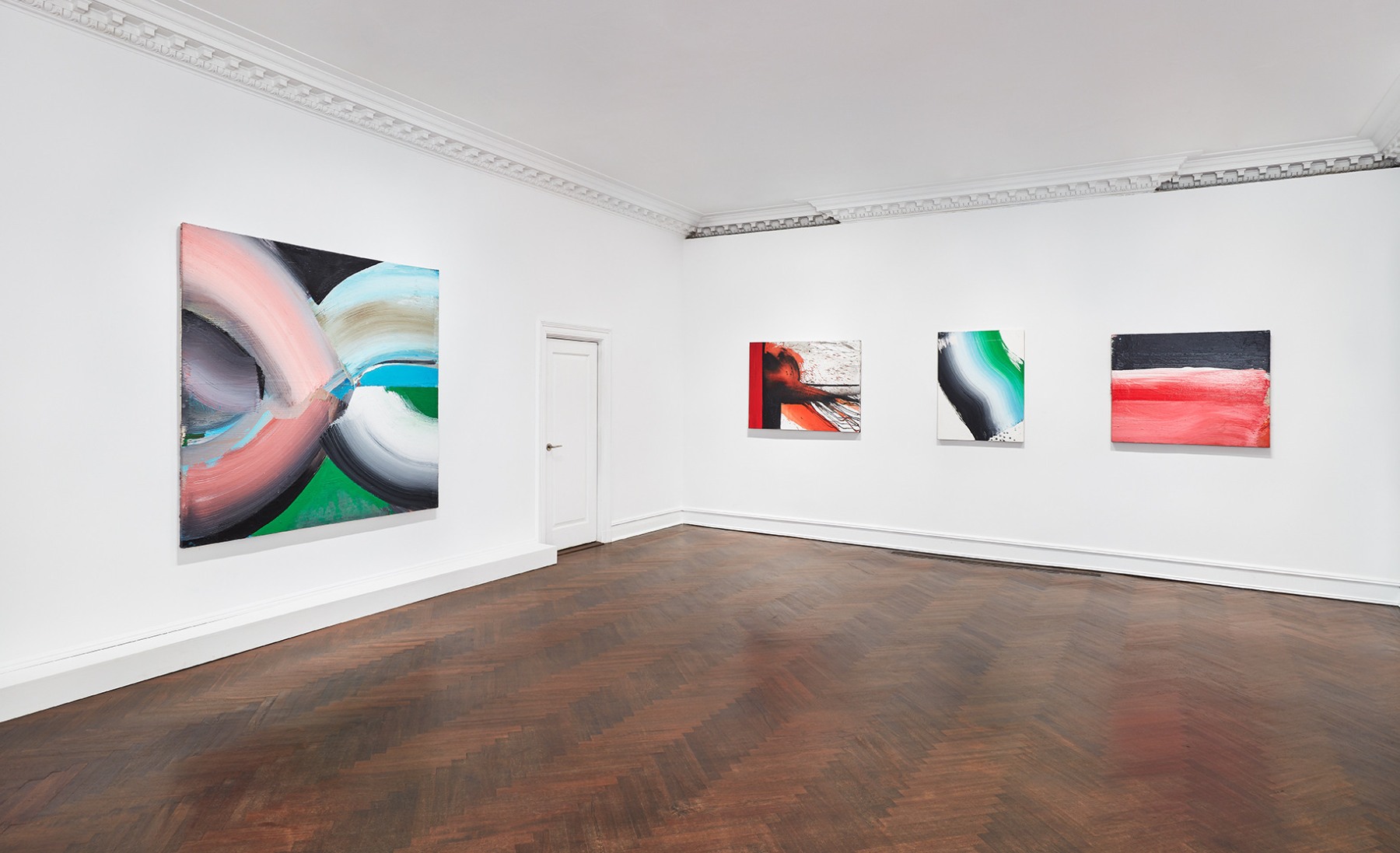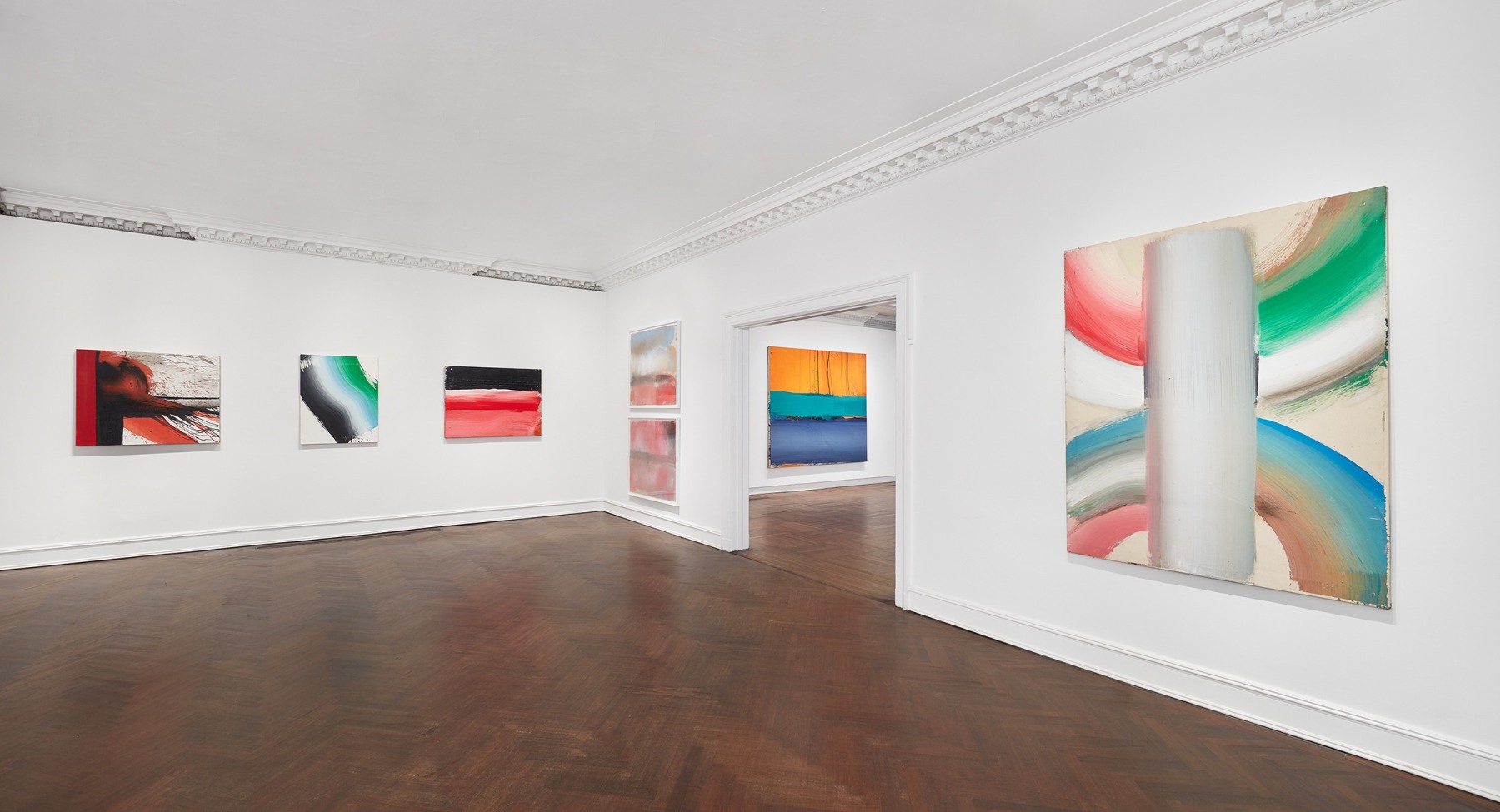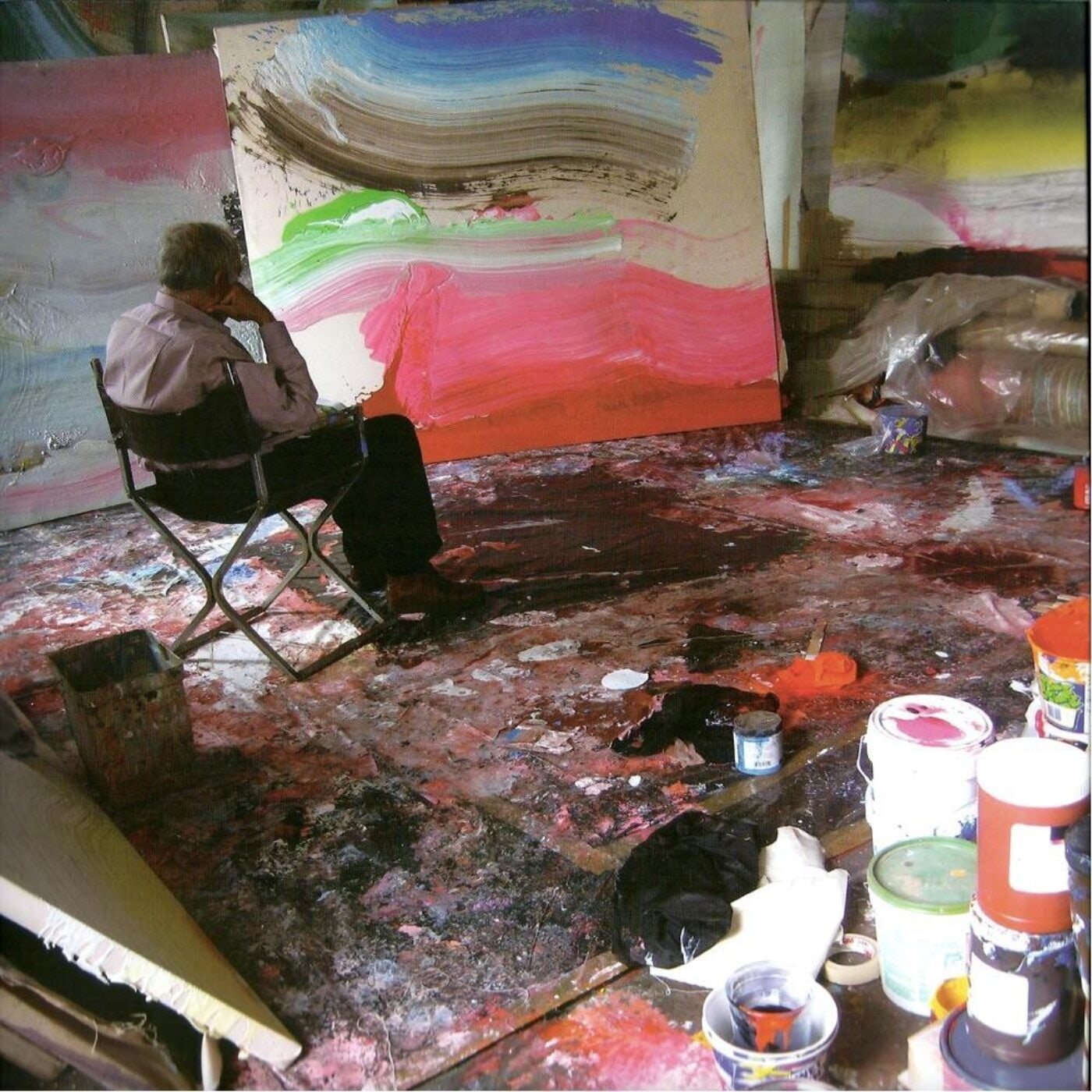Ed Clark
The Tilt, 2006
Ed Clark
“Art is not subject to political games; its importance elevates it above any racial difference. All men of talent, of noble spirit, can make it.”
- ED CLARK
Reflecting on Ed Clark’s The Tilt for our 2018 exhibition Ed Clark: A Survey, writer, curator, and critic Antwaun Sargent wrote:
“Clark’s 2006 painting The Tilt offers further evidence of the revolutionary advances he has made in the space of Abstract Expressionism. In The Tilt, four bands of acrylic sweep diagonally across the field to make a single wave of paint that leaves streaks of uncovered white canvas and droplets of unswept paint in its wake. The color palette of The Tilt is a product of Clark’s exploration into what he has called ‘the luminosity of color’ and his resulting mastery of out-of-this-world coloration. A jet black fades into a faint gray that gives way to milky white, sky blue, and verdant grassy green, all heightened by the surrounding unpainted canvas. The brilliant amplification of hue at work in The Tilt appears in other works of Clark’s that play with a rich range of pinks imbuing his canvases with lush sensuality.” (A. Sargent, Ed Clark: A Survey, Mnuchin Gallery, exh. cat., 2018, p. 10).

Installation view of Ed Clark's The Tilt (2006) in Ed Clark: A Survey at Mnuchin Gallery, September 14 - October 20, 2018. Photography by Tom Powel Imaging, Inc. Artwork © The Estate of Ed Clark.

Ed Clark in his studio. Photo: Liping An. Artwork © The Estate of Ed Clark.
Sargent’s comment about Clark as a harbinger of revolutionary advances in Abstract Expressionism is at the heart of what makes a work such as The Tilt so important, for it is a brilliant encapsulation of these innovations: his game-changing introduction of the push broom as a mark-making tool, his unmatched use of color, and his contributions to the ongoing yet only recently accepted conversation of how abstraction can be an effective tool for conveying the Black experience.
In 1956, while Clark was living in Paris, he first began to experiment with alternate tools to the paintbrush, namely the push broom. Wanting to cover a larger area with broader, straighter strokes than he was capable of with his wrist and traditional brush alone, the push broom allowed Clark to create long, straight, horizontal strokes that give the impression of speed and spontaneity. Clark dubbed this breakthrough “the big sweep,” and mused on the thought that in searching for the big sweep, what he was really after was something psychological, an expression of anger, violence, or something lighter but still potent, like dance or the improvisational modes of jazz.

Installation view of Ed Clark's The Tilt (2006) in Ed Clark: A Survey at Mnuchin Gallery, September 14 - October 20, 2018. Photography by Tom Powel Imaging, Inc. Artwork © The Estate of Ed Clark.
The thrusting, forceful motion of Clark’s sweeping gestures seen in The Tilt contains within them a palpable energy that is as much rooted in the tenets of other Abstract Expressionists, such as his friend Joan Mitchell, as they are in his own personal experiences. Having moved frequently as a child, Clark’s conceptions of space and movement were always fluid. As he has said, “I moved so much as a kid, from home to home, from place to place. While I respect the construction of space as it is in a Vermeer, I’m into the movement that goes on in the space. All this movement is about the stroke for me…. What I notice is that if I’m in a place that’s absolutely new to me and I’m in awe of it, it enters into the work in a different way. Even if it’s just broken down into a few areas, I can sense it.” (E. Clark, quoted in Ed Clark: For the Sake of the Search, Belleville Lake: Belleville Lake Press, 1997, p. 23).

Ed Clark in his studio. Photo: Liping An. Artwork © The Estate of Ed Clark.
This perpetual motion sustained Clark throughout his life. A frequent traveler, he was constantly soaking up the energy of his surroundings and the colors and essences of each place. This deep sensitivity to subtle changes in atmosphere and light allowed Clark to become an artist unparalleled as a colorist. It similarly reminds the viewer that more than anything else, the subject of Clark’s paintings, such as The Tilt, is always the paint. “The truth is in the physical brushstroke and the subject of the painting is the paint itself,” Clark once said (E. Clark, quoted in J. Colby, “Ed Clark Has A Brush With Success,” Detroit Free Press, February 12, 1990, p. 6-C).
By focusing on the formal qualities of painting instead of its representational possibilities, Clark and his fellow Black abstractionists performed a radical act that did away with preconceived notions of how one is “supposed” to express one's identity. To quote Sargent again: “In Clark’s acute abstractions, each wild or measured mark represents an extraordinary act of refusal in search of freedom. The freedom is in the way that the paint refuses to do what the eye thinks it should…. The independent movement of the paint refuses realism, power, and tradition. This refusal gets at the state of being black, where so much of the experience of making it through what are supposed to be ‘real’ barriers, beliefs, and images, begins from scratch.” (A. Sargent, quoted in Ed Clark: A Survey, Mnuchin Gallery, exh. cat., 2018, p. 18).
“It struck me that if I paint a person—no matter how I do it—it is a lie. The truth is in the physical brushstroke and the subject of the painting is the paint itself.”
- ED CLARK



